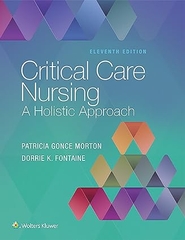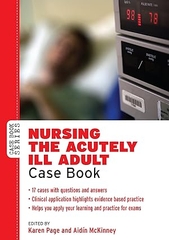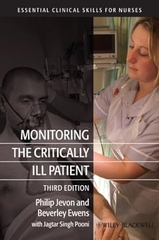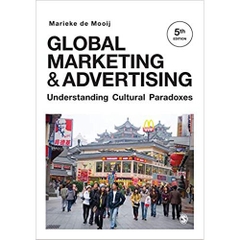-
-
-
Tổng tiền thanh toán:
-
-
Thông tin
-
Tìm sách theo yêu cầu
THE MOST COMPREHENSIVE AND PRACTICAL GUIDE AVAILABLE TO THE EXTRAORDINARY HEALING POWERS OF NATURAL MEDICINE
From the world-renowned naturopathic doctors and bestselling authors of The Encyclopedia of Healing Foods comes the authoritative third edition of the classic reference work, revised and expanded to include the latest cutting-edge natural therapies for the most common ailments. Michael Murray and Joseph Pizzorno focus on promoting health and treating disease with nontoxic, natural therapies. This groundbreaking book—the leader in its field—shows you how to improve your health through a positive mental attitude, a healthy lifestyle, a health-promoting diet, and supplements, along with plenty of practical tips.
Murray and Pizzorno present an evidence-based approach to wellness, based on firm scientific findings. They aim to dispel the notion that natural medicine isn’t “real medicine,” offering examples and studies that show the efficacy of a holistic approach to patient care. This book grounds the reader in the seven major tenets of natural medicine and covers important topics in health care today, including cancer prevention, detoxification, and internal cleansing. Written in an easy-to-follow A–Z format, The Encyclopedia of Natural Medicine offers holistic approaches for treating more than 80 common ailments, including diabetes, celiac disease, endometriosis, and more. Furthermore, it gives you:
-Ways to prevent disease through enhancing key body systems
-The major causes and symptoms of each condition
- The therapeutic considerations you need to be aware of
- Detailed treatment summaries that include the most effective nutritional supplements and botanical medicines
And much more
This groundbreaking text is a perfect introduction to the world of natural medicine, providing clear guidance in the use of the best natural remedies for all kinds of illnesses, big and small. The Encyclopedia of Natural Medicine is a valuable health reference and essential reading for anyone seeking to better their health.
***
DID YOU KNOW?
A cancer-related checkup is recommended every 3 years for people aged 20 to 40 and every year for people aged 40 or older. This exam should include health counseling and, depending on a person’s age and gender, might include examinations for cancers of the thyroid, oral cavity, skin, lymph nodes, testes, or ovaries, as well as for some nonmalignant diseases.
A high dietary intake of vitamin C has been shown to significantly reduce the risk of death from heart attacks and strokes, as well as all other causes including cancer.
Many clinical and experimental studies have clearly demonstrated that stress, personality, attitude, and emotion are etiologic or contributory in suppressing the immune system as well as leading to the development of many diverse diseases.
Regular exercise has been demonstrated to provide benefit to individuals with immunodeficiency diseases, particularly through stress alleviation and mood enhancement. HIV-positive individuals had increases in CD4, CD8, and natural killer (NK) cells immediately following aerobic exercise.
Melatonin exerts significant anticancer effects, especially against breast cancer. Vitamin E not only improves insulin action, it also exerts a number of beneficial effects when taken at dosages ranging from 400 to 800 IU, which may aid in preventing the long-term complications of diabetes.
Find out all of this and more in The Encyclopedia of Natural Medicine!
- Link: http://www.amazon.com/Encyclopedia-Natural-Medicine-Third/dp/1451663005
From the world-renowned naturopathic doctors and bestselling authors of The Encyclopedia of Healing Foods comes the authoritative third edition of the classic reference work, revised and expanded to include the latest cutting-edge natural therapies for the most common ailments. Michael Murray and Joseph Pizzorno focus on promoting health and treating disease with nontoxic, natural therapies. This groundbreaking book—the leader in its field—shows you how to improve your health through a positive mental attitude, a healthy lifestyle, a health-promoting diet, and supplements, along with plenty of practical tips.
Murray and Pizzorno present an evidence-based approach to wellness, based on firm scientific findings. They aim to dispel the notion that natural medicine isn’t “real medicine,” offering examples and studies that show the efficacy of a holistic approach to patient care. This book grounds the reader in the seven major tenets of natural medicine and covers important topics in health care today, including cancer prevention, detoxification, and internal cleansing. Written in an easy-to-follow A–Z format, The Encyclopedia of Natural Medicine offers holistic approaches for treating more than 80 common ailments, including diabetes, celiac disease, endometriosis, and more. Furthermore, it gives you:
-Ways to prevent disease through enhancing key body systems
-The major causes and symptoms of each condition
- The therapeutic considerations you need to be aware of
- Detailed treatment summaries that include the most effective nutritional supplements and botanical medicines
And much more
This groundbreaking text is a perfect introduction to the world of natural medicine, providing clear guidance in the use of the best natural remedies for all kinds of illnesses, big and small. The Encyclopedia of Natural Medicine is a valuable health reference and essential reading for anyone seeking to better their health.
***
DID YOU KNOW?
A cancer-related checkup is recommended every 3 years for people aged 20 to 40 and every year for people aged 40 or older. This exam should include health counseling and, depending on a person’s age and gender, might include examinations for cancers of the thyroid, oral cavity, skin, lymph nodes, testes, or ovaries, as well as for some nonmalignant diseases.
A high dietary intake of vitamin C has been shown to significantly reduce the risk of death from heart attacks and strokes, as well as all other causes including cancer.
Many clinical and experimental studies have clearly demonstrated that stress, personality, attitude, and emotion are etiologic or contributory in suppressing the immune system as well as leading to the development of many diverse diseases.
Regular exercise has been demonstrated to provide benefit to individuals with immunodeficiency diseases, particularly through stress alleviation and mood enhancement. HIV-positive individuals had increases in CD4, CD8, and natural killer (NK) cells immediately following aerobic exercise.
Melatonin exerts significant anticancer effects, especially against breast cancer. Vitamin E not only improves insulin action, it also exerts a number of beneficial effects when taken at dosages ranging from 400 to 800 IU, which may aid in preventing the long-term complications of diabetes.
Find out all of this and more in The Encyclopedia of Natural Medicine!
Product Details
- Paperback: 1232 pages
- Publisher: Atria Books; 3 edition (July 10, 2012)
- Language: English
- ISBN-10: 1451663005
- ISBN-13: 978-1451663006
- Product Dimensions: 9.3 x 7.4 x 2.4 inches
- Shipping Weight: 4.6 pounds (View shipping rates and policies)
- Average Customer Review: 4.8 out of 5 stars See all reviews (49 customer reviews)
- Amazon Best Sellers Rank: #9,643 in Books (See Top 100 in Books)
- #17 in Books > Health, Fitness & Dieting > Alternative Medicine > Herbal Remedies
- #54 in Books > Health, Fitness & Dieting > Alternative Medicine > Healing
Editorial Reviews
About the Author
Dr. Michael T. Murray is regarded as the world authority on natural medicine. An educator, lecturer, researcher, and health food industry consultant, he is the author of more than thirty books on health and healing. He lives in Arizona.
Dr. Joseph Pizzorno is the co-founder and President Emeritus of Bastyr University, the leading institution teaching naturopathic medicine. He is the medical editor of Integrative Medicine: A Clinician’s Journal and an ongoing contributor to magazines, such as Natural Health and Better Nutrition. He lives in Washington State.
Dr. Joseph Pizzorno is the co-founder and President Emeritus of Bastyr University, the leading institution teaching naturopathic medicine. He is the medical editor of Integrative Medicine: A Clinician’s Journal and an ongoing contributor to magazines, such as Natural Health and Better Nutrition. He lives in Washington State.
Excerpt. © Reprinted by permission. All rights reserved.
What Is Natural Medicine?
The doctor of the future will give no medicine, but will interest his patient in the care of the human frame, in diet and in the cause and prevention of disease.
—THOMAS EDISON
Introduction
An evolution in the core principles of health care has been occurring over the last few decades. At the forefront of this change is naturopathic medicine—a system of medicine based on the belief that the human body has a remarkable innate healing ability. Naturopathic doctors (N.D.’s) view the patient as a complex, interrelated system—a whole person—and focus on promoting health through natural, nontoxic therapies such as nutrition, lifestyle modification, herbal remedies, psychological measures, and many others.
Naturopathic medicine is helping to usher in the emerging paradigm in medicine. A paradigm is a model used to explain events. As our understanding of the environment and the human body evolves, new paradigms are developed. For example, in physics the cause-and-effect views of Descartes and Newton were replaced by Einstein’s theory of relativity, quantum mechanics, and approaches in theoretical physics that take into considerations the tremendous interconnectedness of the universe.
The new paradigm in medicine also focuses on the interconnectedness of body, mind, emotions, social factors, and the environment. While the old paradigm viewed the body basically as a machine that can be fixed best with drugs and surgery, the emerging new model considers these measures secondary to natural, noninvasive techniques that promote health by supporting the body’s own healing processes. The relationship between the physician and patient is also evolving. The era of the physician as a demigod is over. The era of self-empowerment is beginning.
Naturopathic Medicine: A Brief History
Naturopathy (the word means “nature cure”) is a method of healing that employs various natural means to empower an individual to achieve the highest level of health possible. Despite its philosophical links to many cultures, modern naturopathic medicine grew out of natural healing systems in 18th- and 19th-century Europe and the United States. The European tradition of “taking the cure” at natural springs or spas had gained a foothold in America by the middle of the 18th century. The custom helped make Germany and the United States especially receptive to the ideas of naturopathy. Among the movement’s earliest promoters were Sebastian Kneipp, a priest who credited his recovery from tuberculosis to bathing in the Danube; and Benedict Lust, a physician who trained at the water-cure clinic that Kneipp had founded in Europe. Lust arrived in the United States in the 1890s and began using the term naturopathy to describe an eclectic compilation of doctrines of natural healing.
In 1902, Lust founded the first naturopathic college of medicine in the United States in New York City. It taught a system of medicine that included the best of what was then known about nutritional therapy, natural diet, herbal medicine, homeopathy, spinal manipulation, exercise therapy, hydrotherapy, electrotherapy, stress reduction, and other natural therapies. The basic tenets of Lust’s view of naturopathy are summarized in his article “The Principles, Aim and Program of the Nature Cure”:1
The natural system for curing disease is based on a return to nature in regulating the diet, breathing, exercising, bathing and the employment of various forces to eliminate the poisonous products in the system, and so raise the vitality of the patient to a proper standard of health. . . .
THE PROGRAM OF NATUROPATHIC CURE
1. ELIMINATION OF EVIL HABITS, or the weeds of life, such as over-eating, alcoholic drinks, drugs, the use of tea, coffee and cocoa that contain poisons, meat eating, improper hours of living, waste of vital forces, lowered vitality, sexual and social aberrations, worry, etc.
2. CORRECTIVE HABITS. Correct breathing, correct exercise, right mental attitude. Moderation in the pursuit of health and wealth.
3. NEW PRINCIPLES OF LIVING. Proper fasting, selection of food, hydropathy, light and air baths, mud baths, osteopathy, chiropractic and other forms of mechano-therapy, mineral salts obtained in organic from, electropathy, heliopathy, steam or Turkish baths, sitz baths, etc. . . .
There is really but one healing force in existence and that is Nature herself, which means the inherent restorative power of the organism to overcome disease. Now the question is, can this power be appropriated and guided more readily by extrinsic or intrinsic methods? That is to say, is it more amenable to combat disease by irritating drugs, vaccines and serums employed by superstitious moderns, or by the bland intrinsic congenial forces of Natural Therapeutics, that are employed by this new school of medicine, that is Naturopathy, which is the only orthodox school of medicine? Are not these natural forces much more orthodox than the artificial resources of the druggist? The practical application of these natural agencies, duly suited to the individual case, are true signs that the art of healing has been elaborated by the aid of absolutely harmless, congenial treatments.
The early naturopaths, including Lust, attached great importance to a natural, healthful diet. So did many of their contemporaries. John Kellogg, a physician, Seventh-day Adventist, and vegetarian, ran the Battle Creek Sanitarium, which utilized natural therapies; his brother, Will, built and ran a factory in Battle Creek, Michigan, to produce health foods such as shredded wheat and granola biscuits. Driven both by personal convictions about the benefits of cereal fibers and by commercial interests, the Kellogg brothers, along with a former employee, C. W. Post, helped popularize naturopathic ideas about food.
Naturopathic medicine grew and flourished in the early part of the 20th century. However, in the mid-1930s several factors led to the medical profession’s establishing the foundation for its current virtual monopoly on health care: (1) the medical profession finally stopped using therapies such as bloodletting and mercury dosing, replacing them with new therapies that were more effective for treating symptoms and much less toxic; (2) foundations supported by the drug industry began heavily subsidizing medical schools and drug research; and (3) the medical profession became much more of a political force, resulting in the passing of legislation that severely restricted the viability of other health care systems.2
Naturopathy has experienced a tremendous resurgence since the mid-1970s when the profession was nearly extinct. This resurgence is largely related to increased public awareness about the role of diet and lifestyle in chronic diseases and the failure of modern medicine to deal effectively with these disorders. In addition, the 1978 founding of Bastyr University, with its focus on teaching science-based natural medicine and its landmark achievement of accreditation, played a major role.
The Philosophy of Naturopathic Medicine
Although the term naturopathy or naturopathic medicine was not used until the late 19th century, the philosophical roots of this medical system go back thousands of years. Drawing on the healing wisdom of many cultures, including India’s ayurveda, China’s Taoism, and Greece’s Hippocratic school of medicine, naturopathic medicine is a system founded on seven time-tested principles:
Principle 1: The healing power of nature (vis medicatrix naturae). Naturopathic physicians believe that the body has considerable power to heal itself. It is the role of the physician to facilitate and enhance this process with the aid of natural nontoxic therapies.
Principle 2: Identify and treat the cause (tolle causam). The naturopathic physician is trained to seek the underlying causes of a disease rather than simply suppress the symptoms, which are viewed as expressions of the body’s attempt to heal. The causes of disease can arise at the physical, mental-emotional, and spiritual levels.
Principle 3: First, do no harm (primum non nocere). The naturopathic physician seeks to do no harm with medical treatment by employing safe and effective natural therapies.
Principle 4: Treat the whole person (holism). Naturopathic physicians are trained to view an individual as a whole, a complex interaction of physical, mental-emotional, spiritual, social, and other factors.
Principle 5: The physician as teacher (docere). The naturopathic physician is foremost a teacher, educating, empowering, and motivating the patients to assume more personal responsibility for their health by adopting a healthful attitude, lifestyle, and diet.
Principle 6: Prevention is the best cure. Naturopathic physicians are specialists in preventive medicine. Prevention of disease and support of health are accomplished through education and life habits.
Principle 7: Establishing health and wellness. Establishing and maintaining optimal health and promoting wellness are the primary goals of the naturopathic physician. While health is defined as the state of optimal physical, mental, emotional, and spiritual well-being, wellness is defined as a state of health characterized by a positive emotional state. The naturopathic physician strives to increase the level of wellness regardless of the disease or level of health. Even in cases of severe disease, a high level of wellness can often be achieved.
Naturopathic Therapy
Naturopathic physicians’ primary focus is on promoting health and preventing disease. In addition to providing recommendations on lifestyle, diet, and exercise, naturopathic physicians may elect to utilize a variety of therapeutic modalities to promote health. Some naturopathic physicians choos... --This text refers to an out of print or unavailable edition of this title.
The doctor of the future will give no medicine, but will interest his patient in the care of the human frame, in diet and in the cause and prevention of disease.
—THOMAS EDISON
Introduction
An evolution in the core principles of health care has been occurring over the last few decades. At the forefront of this change is naturopathic medicine—a system of medicine based on the belief that the human body has a remarkable innate healing ability. Naturopathic doctors (N.D.’s) view the patient as a complex, interrelated system—a whole person—and focus on promoting health through natural, nontoxic therapies such as nutrition, lifestyle modification, herbal remedies, psychological measures, and many others.
Naturopathic medicine is helping to usher in the emerging paradigm in medicine. A paradigm is a model used to explain events. As our understanding of the environment and the human body evolves, new paradigms are developed. For example, in physics the cause-and-effect views of Descartes and Newton were replaced by Einstein’s theory of relativity, quantum mechanics, and approaches in theoretical physics that take into considerations the tremendous interconnectedness of the universe.
The new paradigm in medicine also focuses on the interconnectedness of body, mind, emotions, social factors, and the environment. While the old paradigm viewed the body basically as a machine that can be fixed best with drugs and surgery, the emerging new model considers these measures secondary to natural, noninvasive techniques that promote health by supporting the body’s own healing processes. The relationship between the physician and patient is also evolving. The era of the physician as a demigod is over. The era of self-empowerment is beginning.
Naturopathic Medicine: A Brief History
Naturopathy (the word means “nature cure”) is a method of healing that employs various natural means to empower an individual to achieve the highest level of health possible. Despite its philosophical links to many cultures, modern naturopathic medicine grew out of natural healing systems in 18th- and 19th-century Europe and the United States. The European tradition of “taking the cure” at natural springs or spas had gained a foothold in America by the middle of the 18th century. The custom helped make Germany and the United States especially receptive to the ideas of naturopathy. Among the movement’s earliest promoters were Sebastian Kneipp, a priest who credited his recovery from tuberculosis to bathing in the Danube; and Benedict Lust, a physician who trained at the water-cure clinic that Kneipp had founded in Europe. Lust arrived in the United States in the 1890s and began using the term naturopathy to describe an eclectic compilation of doctrines of natural healing.
In 1902, Lust founded the first naturopathic college of medicine in the United States in New York City. It taught a system of medicine that included the best of what was then known about nutritional therapy, natural diet, herbal medicine, homeopathy, spinal manipulation, exercise therapy, hydrotherapy, electrotherapy, stress reduction, and other natural therapies. The basic tenets of Lust’s view of naturopathy are summarized in his article “The Principles, Aim and Program of the Nature Cure”:1
The natural system for curing disease is based on a return to nature in regulating the diet, breathing, exercising, bathing and the employment of various forces to eliminate the poisonous products in the system, and so raise the vitality of the patient to a proper standard of health. . . .
THE PROGRAM OF NATUROPATHIC CURE
1. ELIMINATION OF EVIL HABITS, or the weeds of life, such as over-eating, alcoholic drinks, drugs, the use of tea, coffee and cocoa that contain poisons, meat eating, improper hours of living, waste of vital forces, lowered vitality, sexual and social aberrations, worry, etc.
2. CORRECTIVE HABITS. Correct breathing, correct exercise, right mental attitude. Moderation in the pursuit of health and wealth.
3. NEW PRINCIPLES OF LIVING. Proper fasting, selection of food, hydropathy, light and air baths, mud baths, osteopathy, chiropractic and other forms of mechano-therapy, mineral salts obtained in organic from, electropathy, heliopathy, steam or Turkish baths, sitz baths, etc. . . .
There is really but one healing force in existence and that is Nature herself, which means the inherent restorative power of the organism to overcome disease. Now the question is, can this power be appropriated and guided more readily by extrinsic or intrinsic methods? That is to say, is it more amenable to combat disease by irritating drugs, vaccines and serums employed by superstitious moderns, or by the bland intrinsic congenial forces of Natural Therapeutics, that are employed by this new school of medicine, that is Naturopathy, which is the only orthodox school of medicine? Are not these natural forces much more orthodox than the artificial resources of the druggist? The practical application of these natural agencies, duly suited to the individual case, are true signs that the art of healing has been elaborated by the aid of absolutely harmless, congenial treatments.
The early naturopaths, including Lust, attached great importance to a natural, healthful diet. So did many of their contemporaries. John Kellogg, a physician, Seventh-day Adventist, and vegetarian, ran the Battle Creek Sanitarium, which utilized natural therapies; his brother, Will, built and ran a factory in Battle Creek, Michigan, to produce health foods such as shredded wheat and granola biscuits. Driven both by personal convictions about the benefits of cereal fibers and by commercial interests, the Kellogg brothers, along with a former employee, C. W. Post, helped popularize naturopathic ideas about food.
Naturopathic medicine grew and flourished in the early part of the 20th century. However, in the mid-1930s several factors led to the medical profession’s establishing the foundation for its current virtual monopoly on health care: (1) the medical profession finally stopped using therapies such as bloodletting and mercury dosing, replacing them with new therapies that were more effective for treating symptoms and much less toxic; (2) foundations supported by the drug industry began heavily subsidizing medical schools and drug research; and (3) the medical profession became much more of a political force, resulting in the passing of legislation that severely restricted the viability of other health care systems.2
Naturopathy has experienced a tremendous resurgence since the mid-1970s when the profession was nearly extinct. This resurgence is largely related to increased public awareness about the role of diet and lifestyle in chronic diseases and the failure of modern medicine to deal effectively with these disorders. In addition, the 1978 founding of Bastyr University, with its focus on teaching science-based natural medicine and its landmark achievement of accreditation, played a major role.
The Philosophy of Naturopathic Medicine
Although the term naturopathy or naturopathic medicine was not used until the late 19th century, the philosophical roots of this medical system go back thousands of years. Drawing on the healing wisdom of many cultures, including India’s ayurveda, China’s Taoism, and Greece’s Hippocratic school of medicine, naturopathic medicine is a system founded on seven time-tested principles:
Principle 1: The healing power of nature (vis medicatrix naturae). Naturopathic physicians believe that the body has considerable power to heal itself. It is the role of the physician to facilitate and enhance this process with the aid of natural nontoxic therapies.
Principle 2: Identify and treat the cause (tolle causam). The naturopathic physician is trained to seek the underlying causes of a disease rather than simply suppress the symptoms, which are viewed as expressions of the body’s attempt to heal. The causes of disease can arise at the physical, mental-emotional, and spiritual levels.
Principle 3: First, do no harm (primum non nocere). The naturopathic physician seeks to do no harm with medical treatment by employing safe and effective natural therapies.
Principle 4: Treat the whole person (holism). Naturopathic physicians are trained to view an individual as a whole, a complex interaction of physical, mental-emotional, spiritual, social, and other factors.
Principle 5: The physician as teacher (docere). The naturopathic physician is foremost a teacher, educating, empowering, and motivating the patients to assume more personal responsibility for their health by adopting a healthful attitude, lifestyle, and diet.
Principle 6: Prevention is the best cure. Naturopathic physicians are specialists in preventive medicine. Prevention of disease and support of health are accomplished through education and life habits.
Principle 7: Establishing health and wellness. Establishing and maintaining optimal health and promoting wellness are the primary goals of the naturopathic physician. While health is defined as the state of optimal physical, mental, emotional, and spiritual well-being, wellness is defined as a state of health characterized by a positive emotional state. The naturopathic physician strives to increase the level of wellness regardless of the disease or level of health. Even in cases of severe disease, a high level of wellness can often be achieved.
Naturopathic Therapy
Naturopathic physicians’ primary focus is on promoting health and preventing disease. In addition to providing recommendations on lifestyle, diet, and exercise, naturopathic physicians may elect to utilize a variety of therapeutic modalities to promote health. Some naturopathic physicians choos... --This text refers to an out of print or unavailable edition of this title.
XEM CHI TIẾT TẠI AMAZON.COM
- Thông tin chi tiết
- Mục lục
- Đánh giá & bình luận của người mua
- Những cuốn sách cùng chủ đề hoặc có liên quan
Tại web chỉ có một phần nhỏ các đầu sách đang có nên nếu cần tìm sách gì các bạn có thể liên hệ trực tiếp với Thư viện qua Mail, Zalo, Fanpage nhé
Đăng ký nhận tin qua email
Hãy đăng ký ngay hôm nay để nhận được những tin tức cập nhật mới nhất về sản phẩm và các chương trình giảm giá, khuyến mại của chúng tôi.












